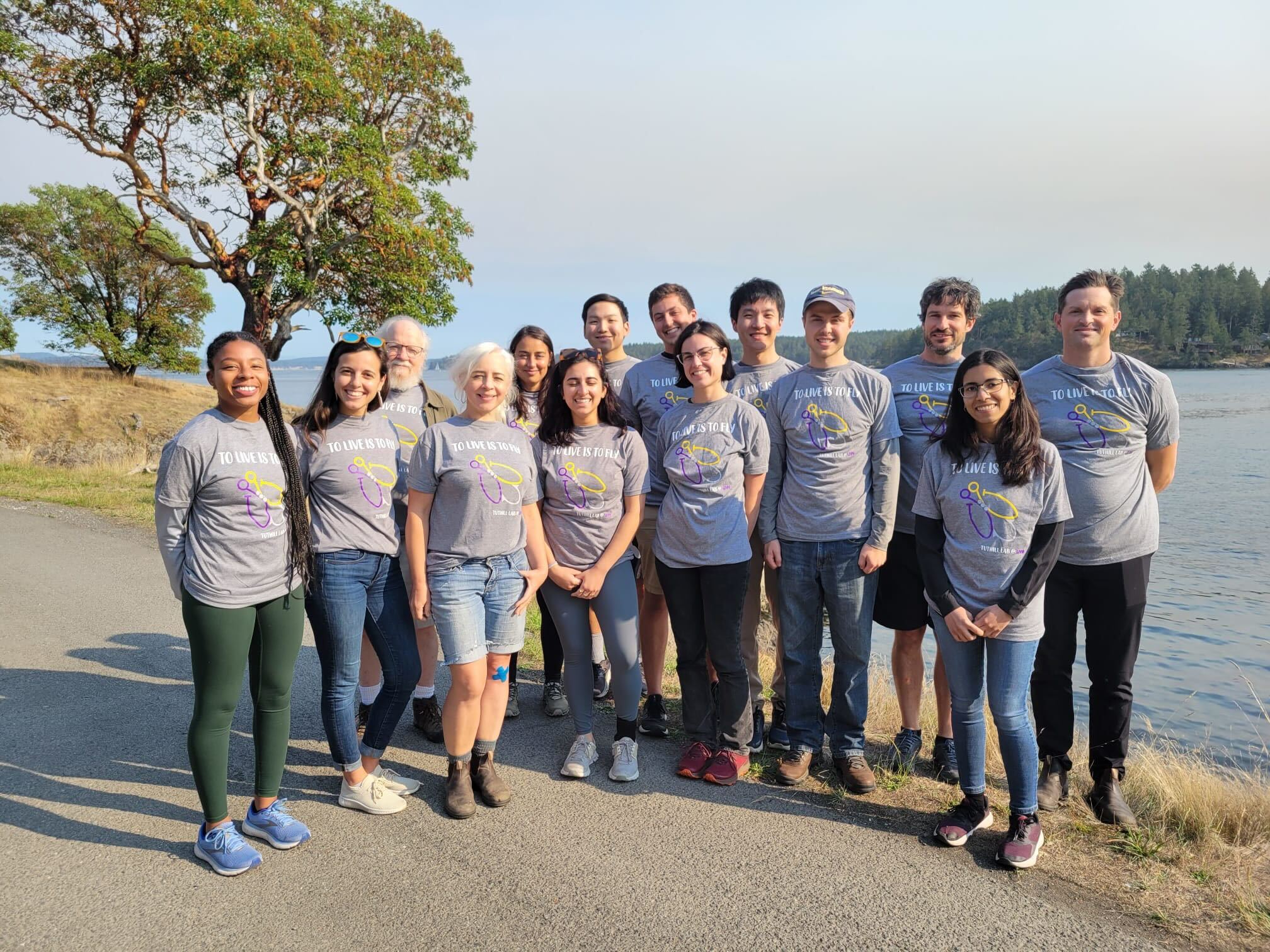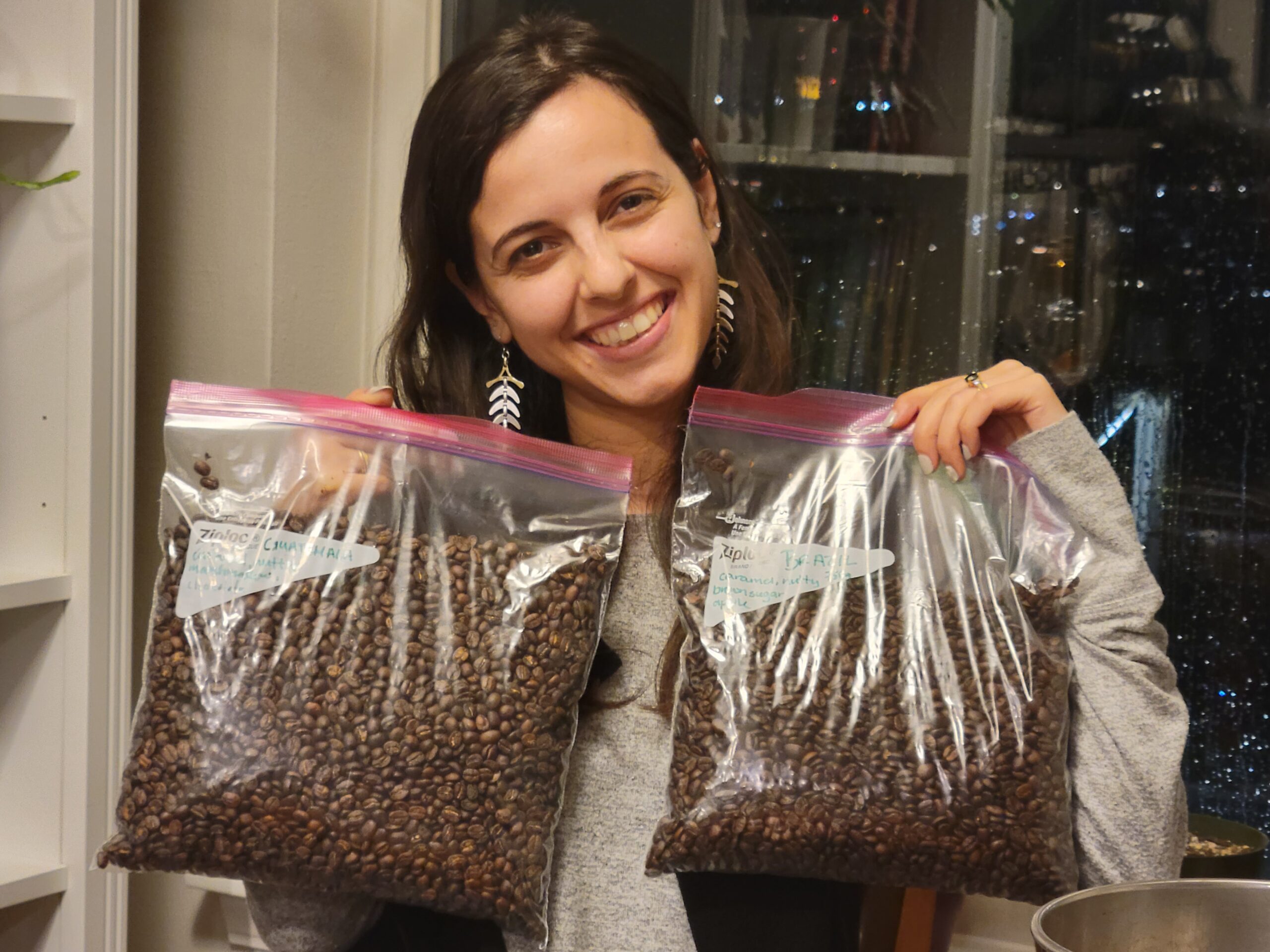Decoding the brain
Ph.D. student Leila Elabbady's research is reshaping how we understand—and access—neuroscience.
Leila Elabbady never set out to become a scientist.
As a liberal arts student at Wellesley College, she enrolled in neuroscience to satisfy a science requirement. But what began as a checkbox turned into a revelation.
“I fell in love with the idea of being able to understand ourselves and our biology through science,” Elabbady recalls. That moment of curiosity ignited a passion that would shape the course of her life.
After graduating, Elabbady returned to Seattle and joined the Allen Institute, where she spent four years contributing to pioneering work in large-scale neural imaging and data analysis. Her first two years were with the Synapse Biology team, developing intricate imaging pipelines to label and illuminate the hidden architecture of cells. She then transitioned to the Electron Microscopy team where they were revolutionizing how we study the brain – working to map entire brain circuits at 4 nanometer resolution.
“We were looking at cells in a way we never had before,” she says. “They were so beautiful, so complex—and nothing like the textbook drawings.”

Drawn to this complexity, Elabbady pivoted to computational neuroscience, helping to develop tools that make sense of vast neural datasets—tools that would become essential to the future of brain science. The experience planted a bold new goal: push the boundaries of what we know about the brain and pave the way for others to do the same.
Today, Elabbady is a Ph.D. candidate in the Neuroscience Graduate Program at the University of Washington, co-advised by John Tuthill at UW and Forrest Collman at the Allen Institute. Her work sits at the intersection of experimental science and cutting-edge computational tools, unlocking new ways to see—and understand—the nervous system.
Elabbady is part of a landmark effort to map the brain at an unprecedented scale. Her research contributed to the MICrONS project, an ambitious federal initiative involving over 150 scientists nationwide.
“The dataset includes around 200,000 cells,” she explains. “But when you first look at it, everything is unlabeled. You don’t know what’s a neuron or what’s glia, let alone what type of neuron it might be. Not knowing what you’re looking at makes it really hard to extract meaningful insights.”
Her major contribution? A model that classifies brain cells by analyzing their cell bodies—transforming that vast, grayscale terrain into a vibrant map of cellular identity. “It gives researchers the ability to see which types of neurons are present and how they connect,” she says. “Ultimately, it’s a tool to help the community do better science and hopefully accelerate discovery.”
For Elabbady, making science open and accessible is as important as making it accurate. That’s why she’s especially proud that the MICrONS data is publicly available.
“Anyone can go online and explore the brain—students, teachers, undergrads, anyone with access to the internet,” she explains. “I would love to see this data in classrooms so kids can click around and see what neurons really look like. That kind of exposure early on could be life changing.”

Her passion for making science inclusive is personal. “My first neuroscience class was a fluke, and now I’m here,” says Elabbady. “I want other students—especially those who may not think of themselves as scientists—to get the chance to be curious.”
Her graduate journey hasn’t always been easy. Elabbady started her Ph.D. in the isolation of the COVID-19 pandemic—long days in a room alone, wondering if this was really what a doctorate looked like. Community, she says, became essential.
“I’m lucky to be in a really fun, creative lab with people I genuinely want to see and innovate with,” she shares. “They turned the inevitable stretches of failed experiments into problem-solving playgrounds. It was the perfect antidote to hours of debugging code in isolation and honestly made the challenges of grad school more manageable.”
When she’s not mapping brains, Elabbady can often be found in her kitchen or balcony garden, experimenting with garden-to-table recipes. One pandemic-era hobby turned semi-obsession?

Coffee roasting—originally done in a repurposed popcorn popper. “It’s really good coffee,” she laughs.
With graduation on the horizon this August, Elabbady is excited to see where she goes next. She hopes to continue increasing our understanding of the world around us and making it accessible along the way. Her only strong desire is to keep asking meaningful questions. “As long as I am exploring the unknown and building things that are useful to others, I’ll be happy.”
By: Tatiana Rodriguez, UW Graduate School
Published on June 13, 2025